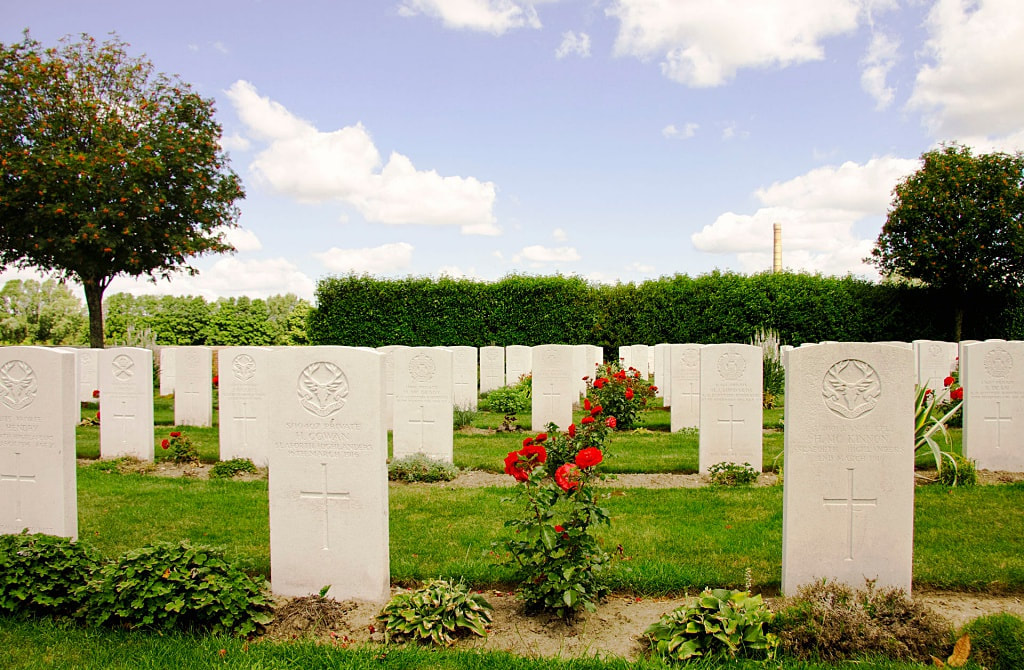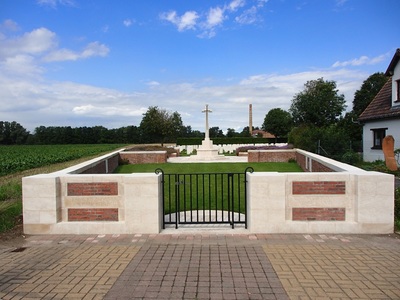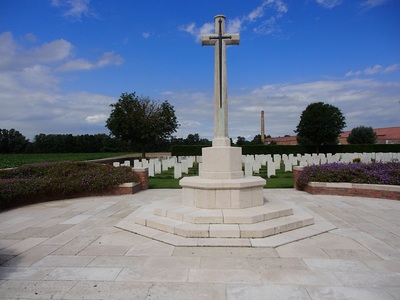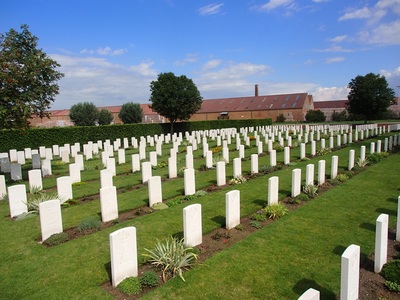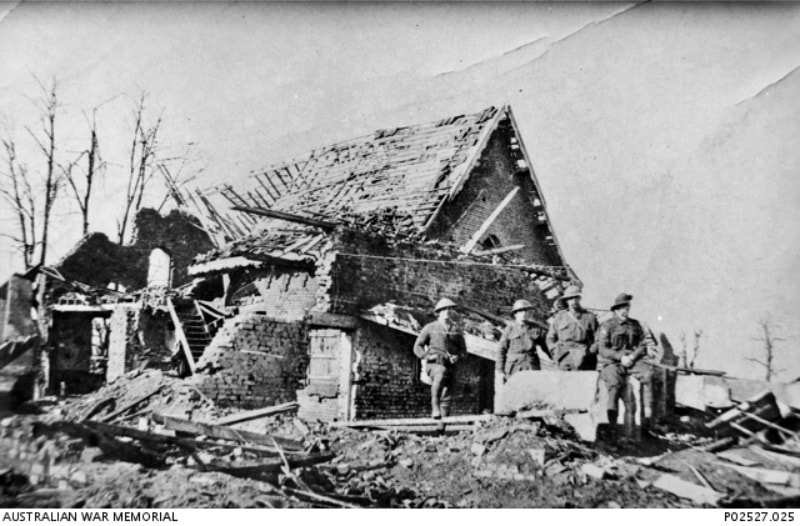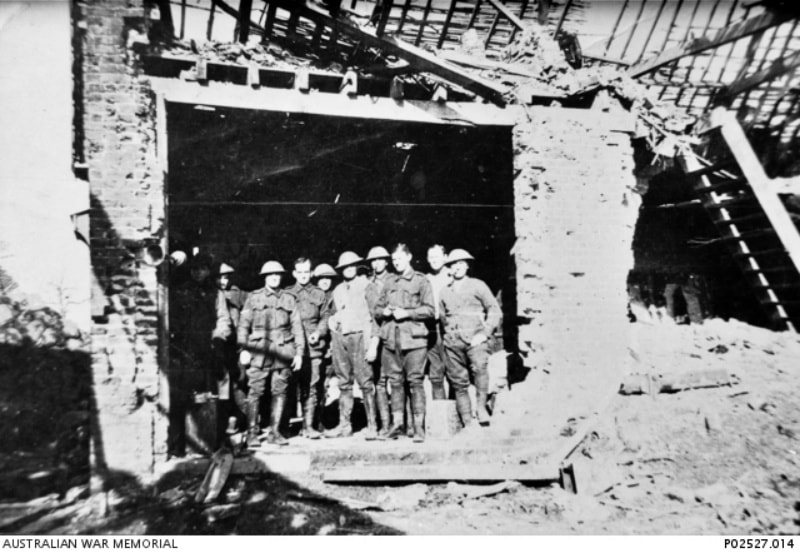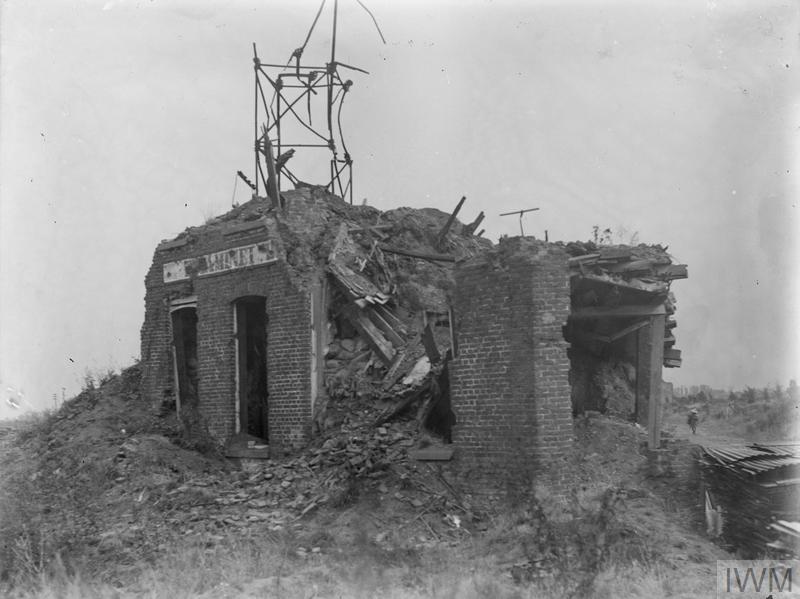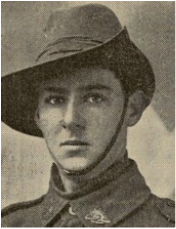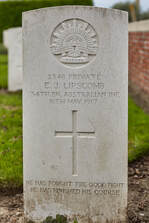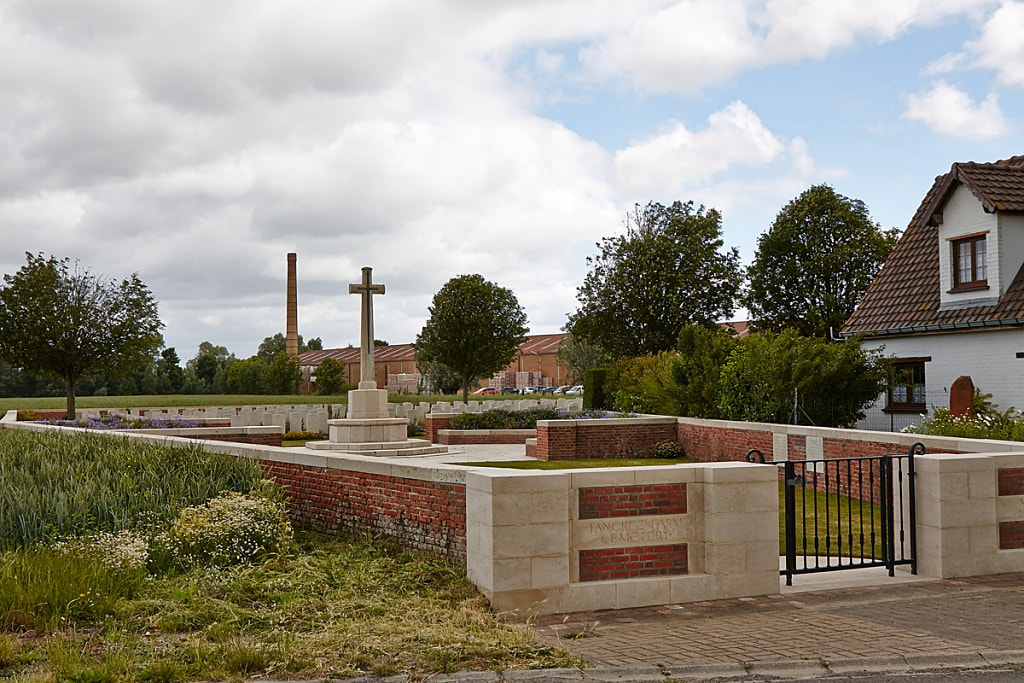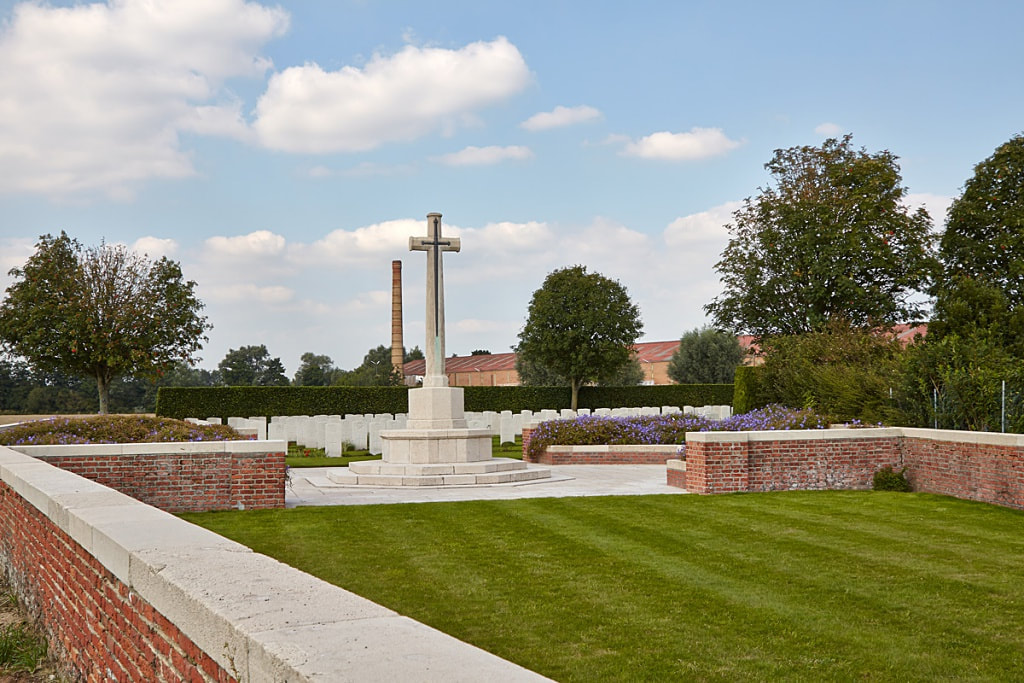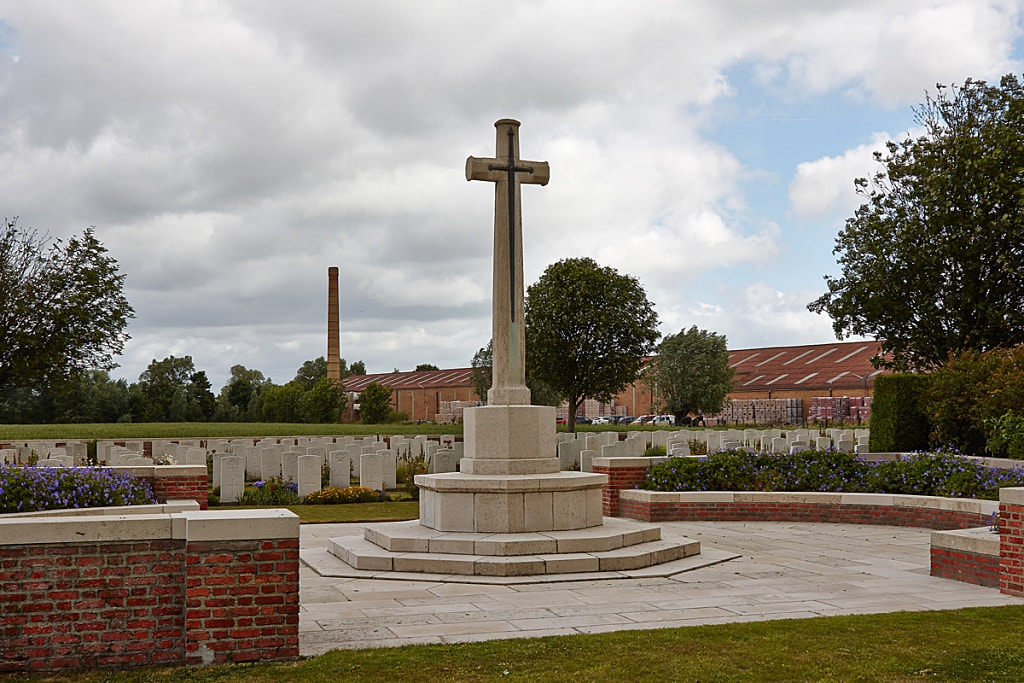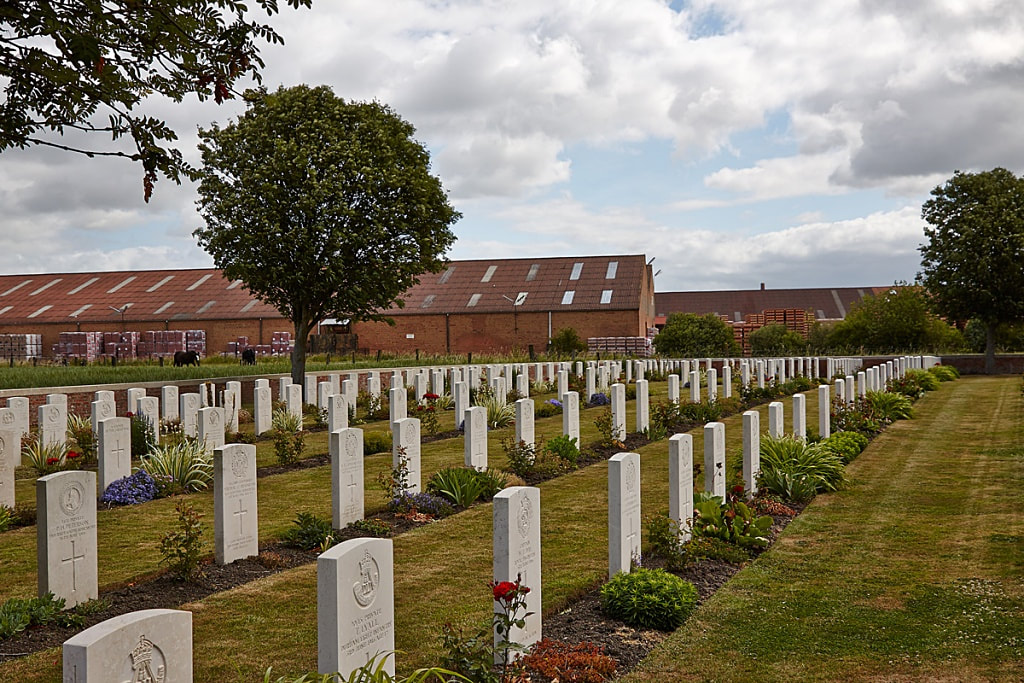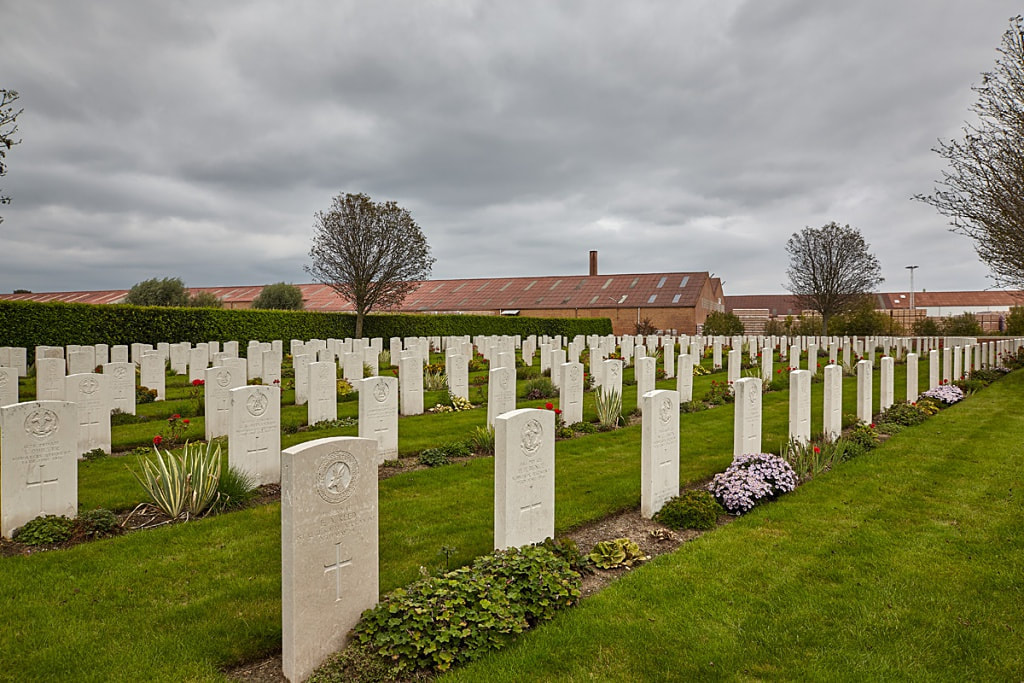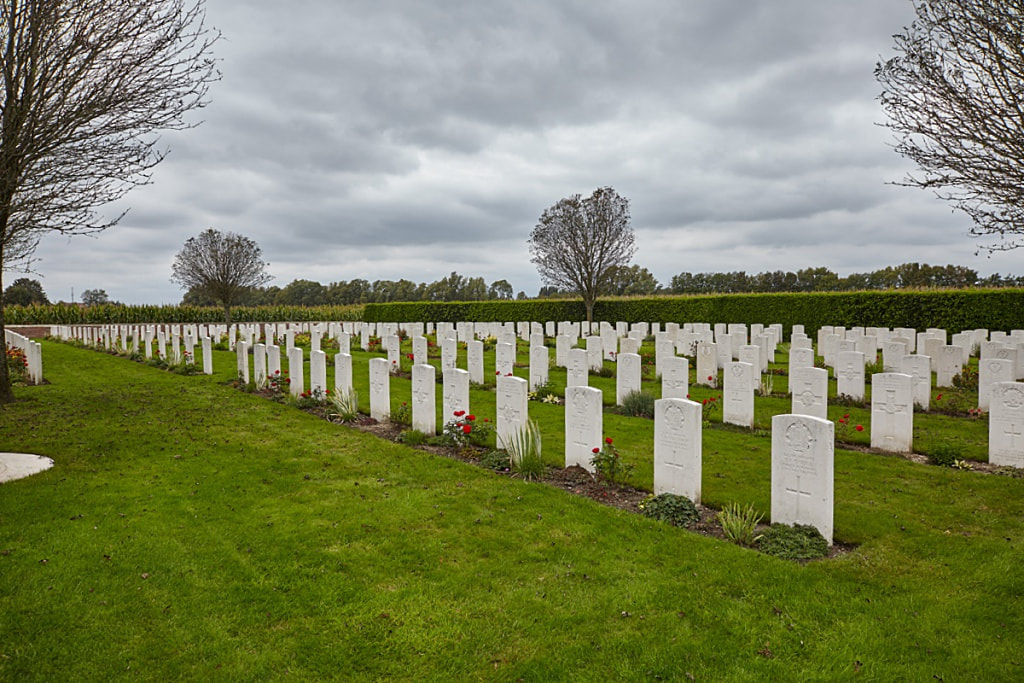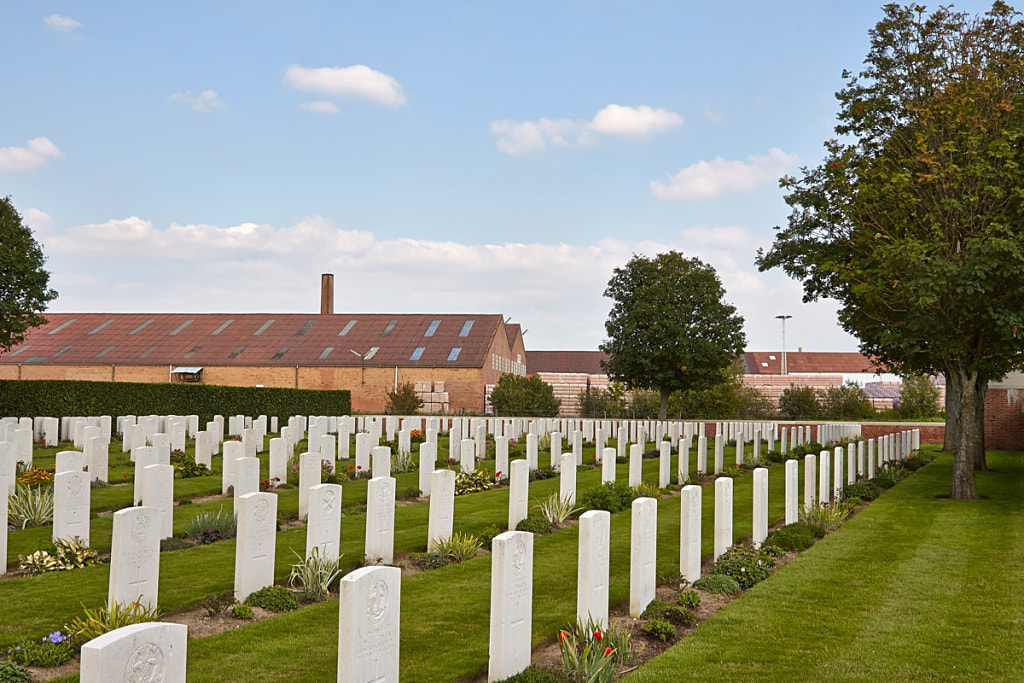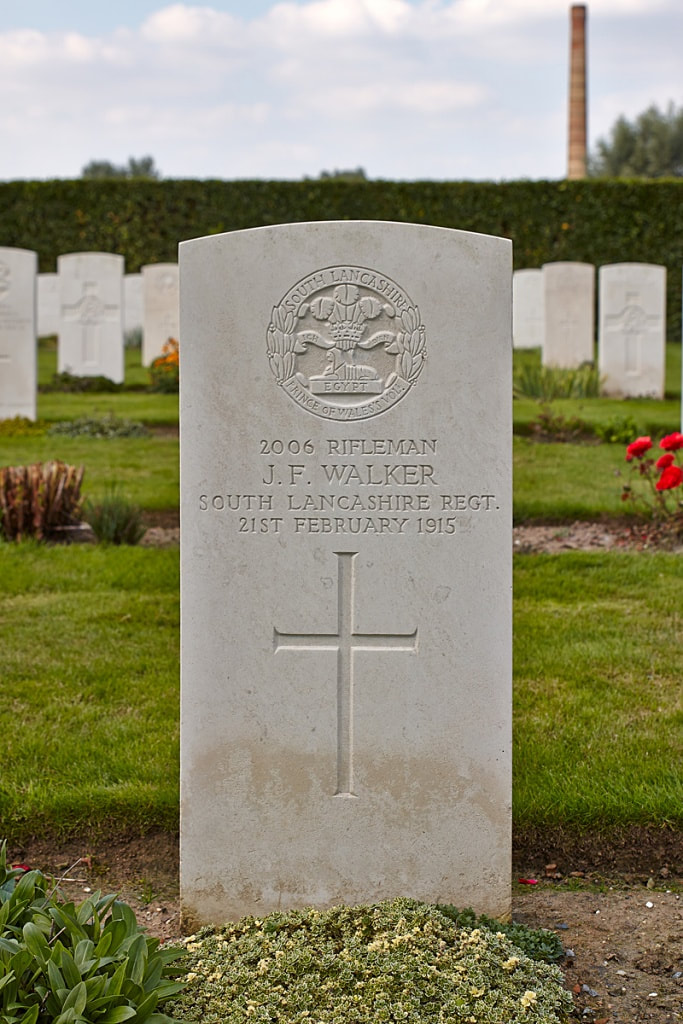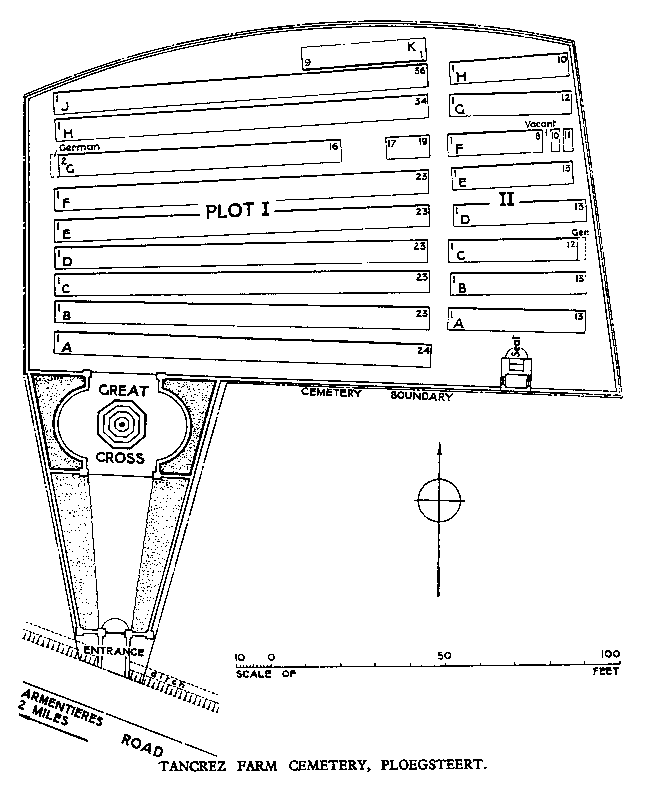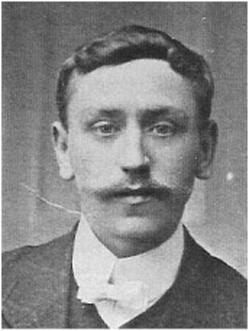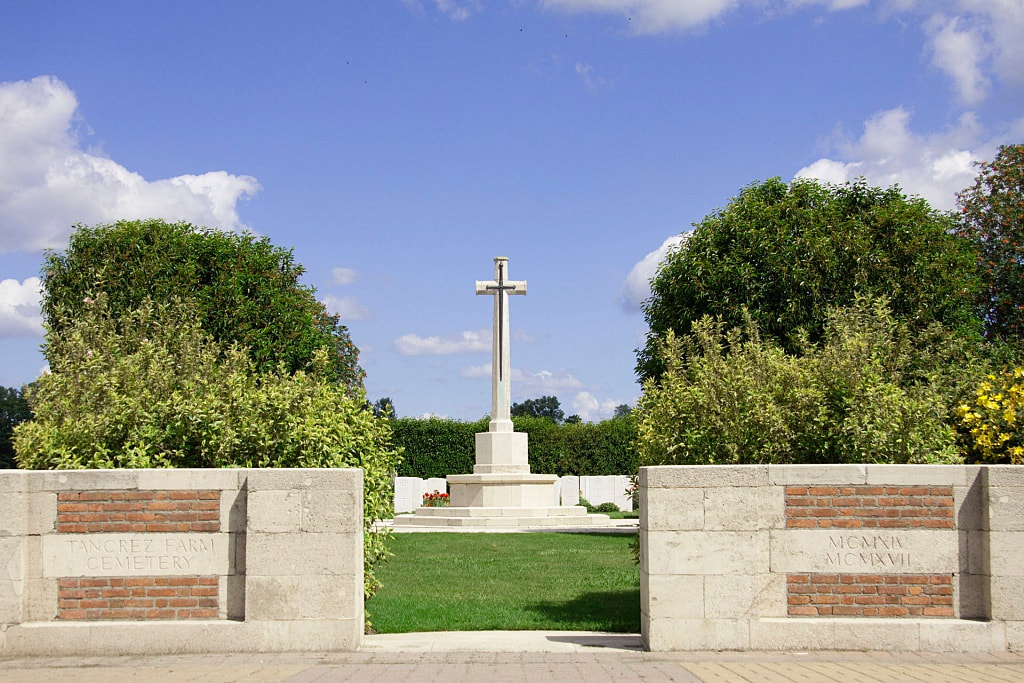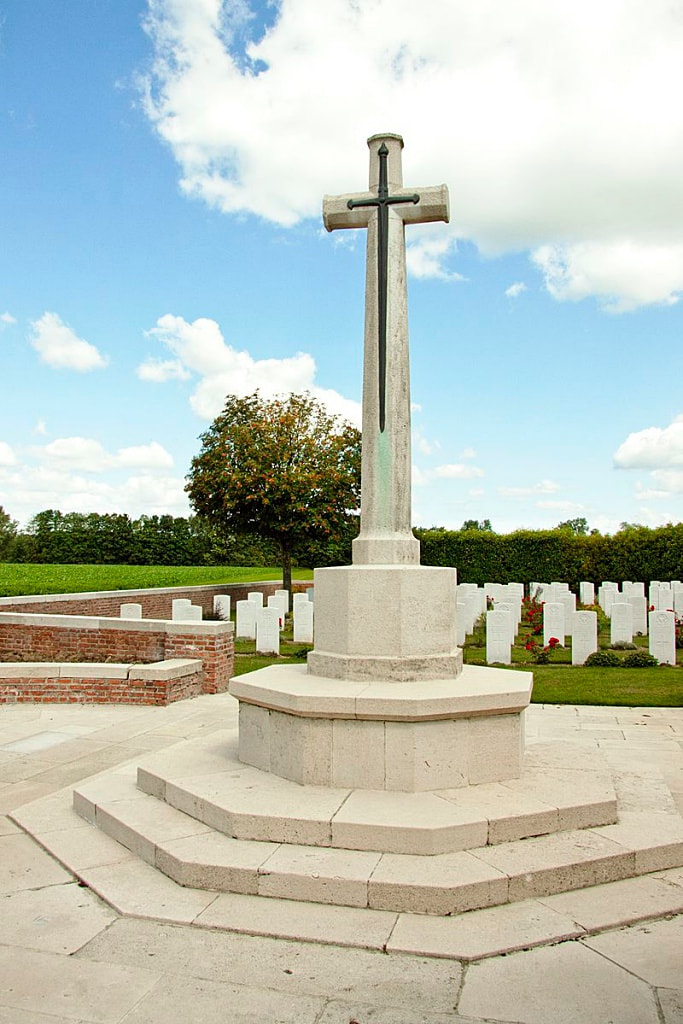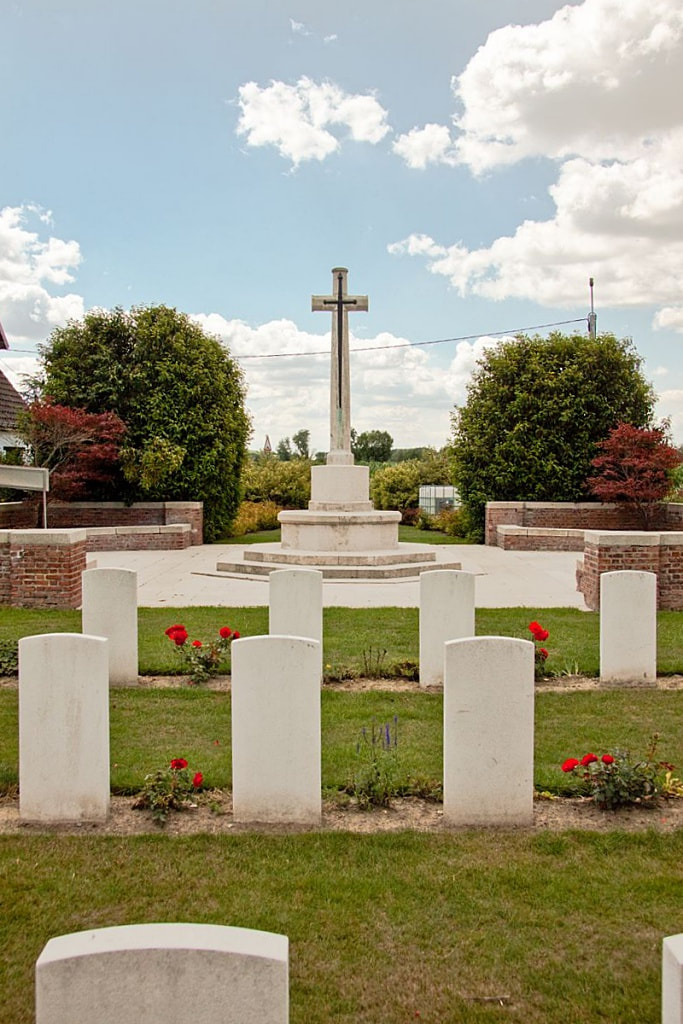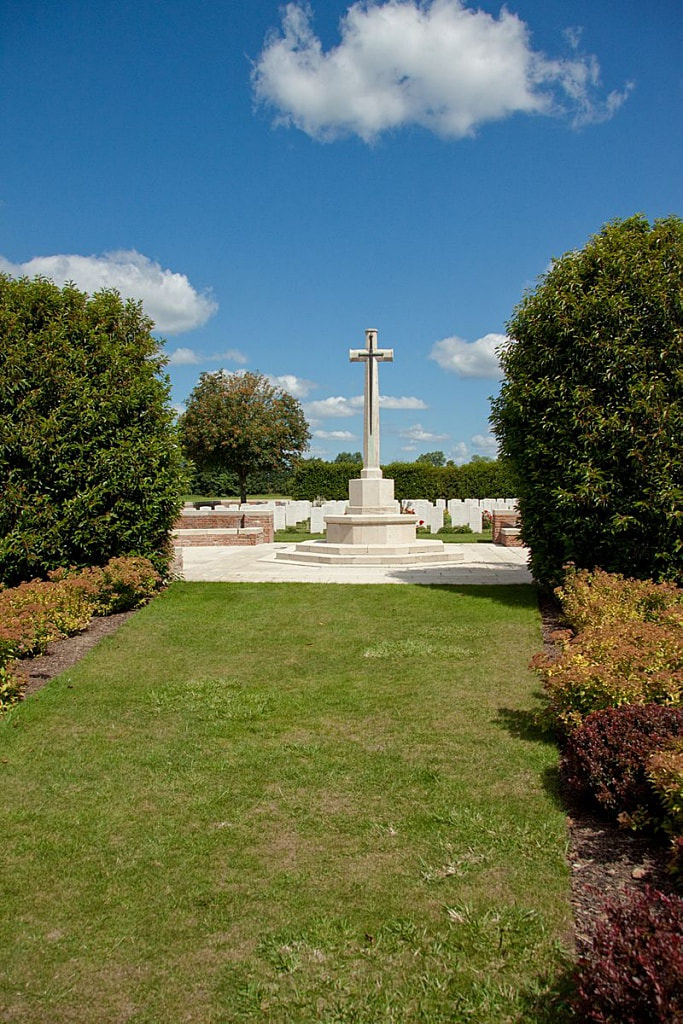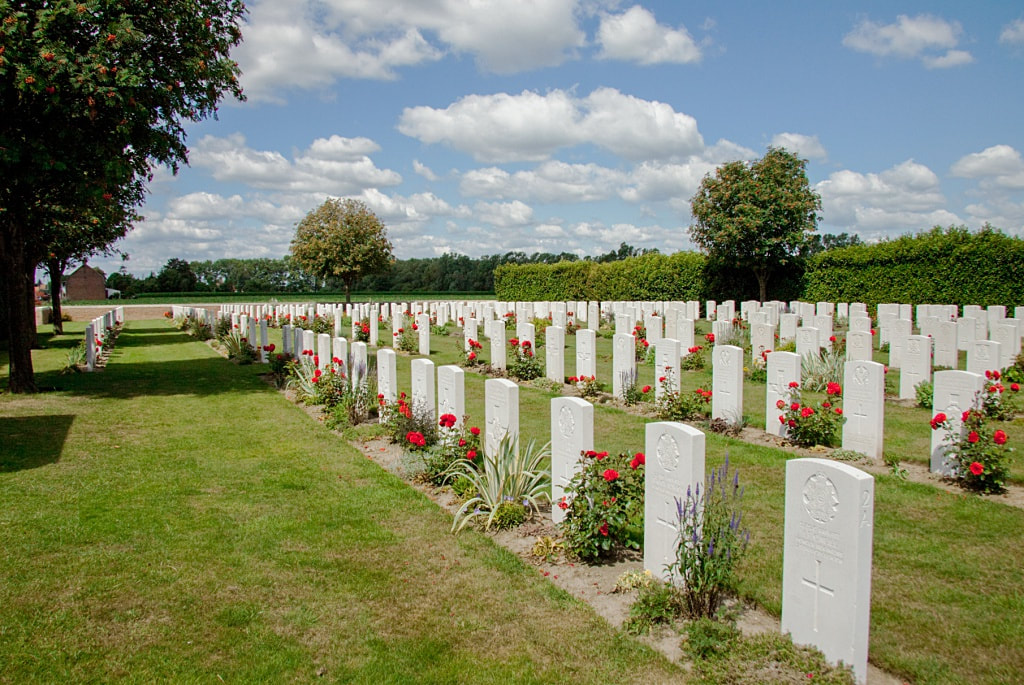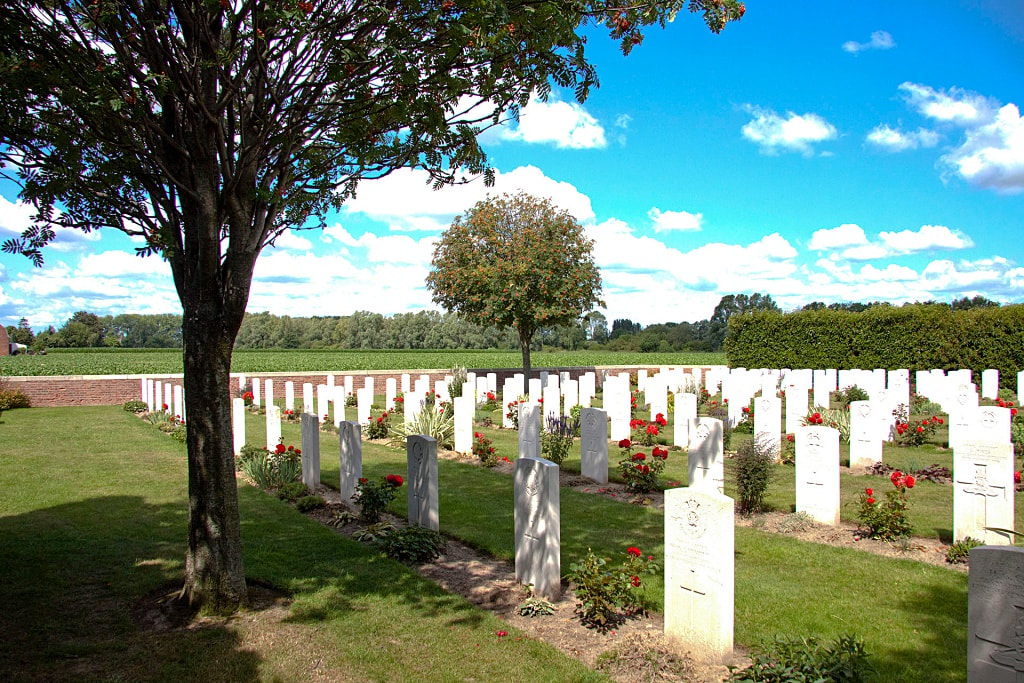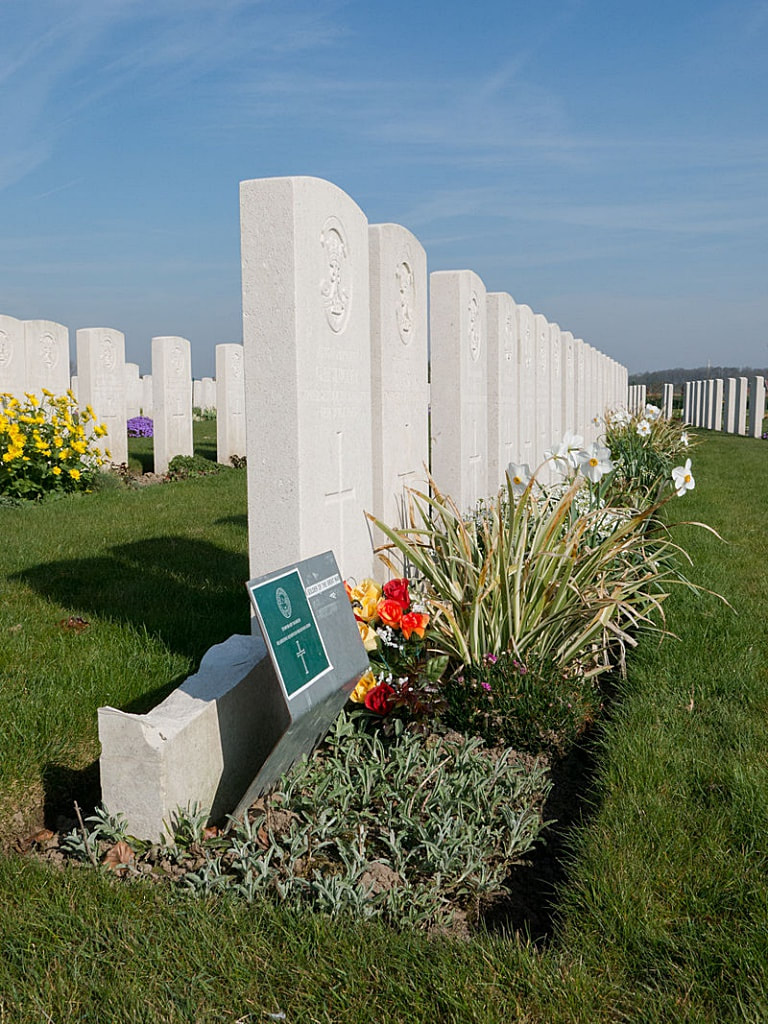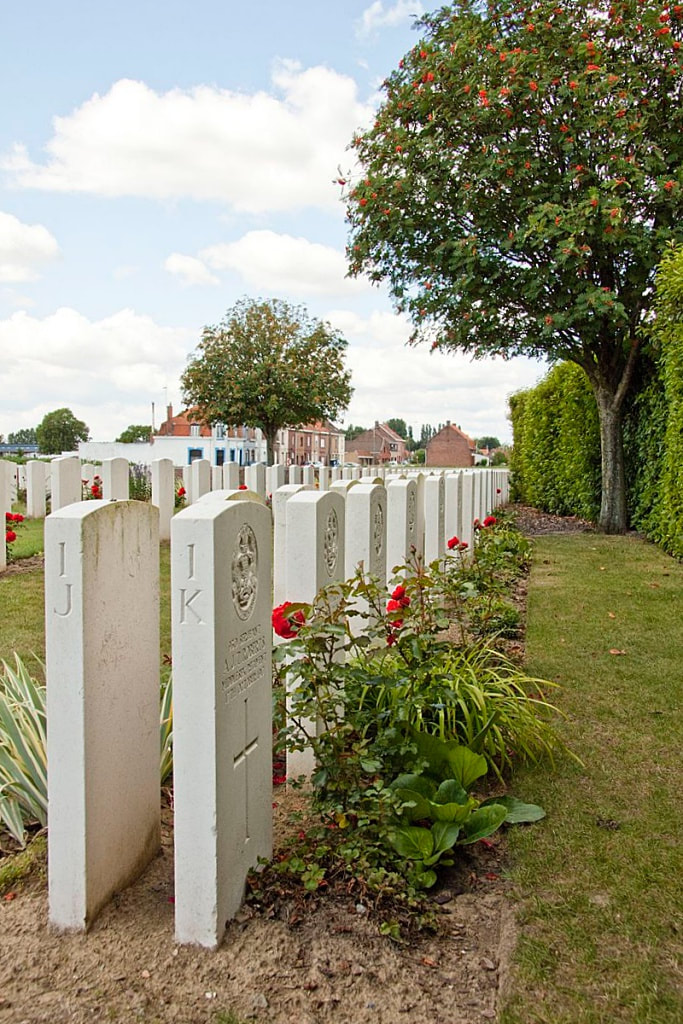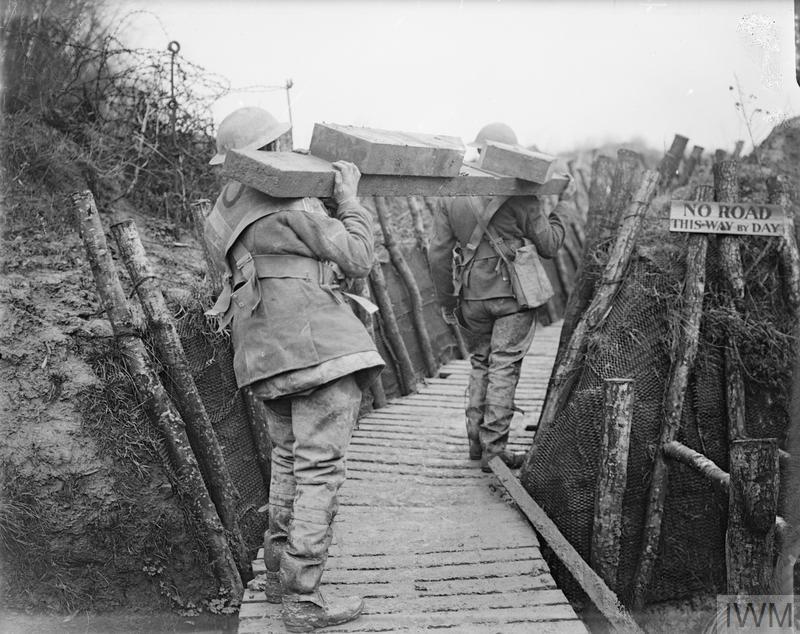TANCREZ FARM CEMETERY
Hainaut
Belgium
GPS Coordinates - Latitude: 50.70959, Longitude: 2.90192
Location Information
Tancrez Farm Cemetery is located 17 Kms south of Ieper town centre, on a road leading from the Rijselseweg N365, which connects Ieper to Wijtschate and on to Armentieres.
From Ieper town centre the Rijselsestraat runs from the market square, through the Lille Gate (Rijselpoort) and directly over the crossroads with the Ieper ring road. The road name then changes to the Rijselseweg.
2 Kms after the village of Ploegsteert lies the left hand turning onto Chemin de la Blanche (Witteweg).
The cemetery is located by taking the first right hand turning from the Witteweg, past Motor Car Cemetery. At the end of this road the road turns to the left towards Touquet. The cemetery is located 500 metres along this road (Rue du Touquet) on the left hand side of the road.
Visiting Information
Wheelchair access is possible via the main entrance.
Historical Information
The commune of Ploegsteert remained under Allied occupation for much of the First World War, but was in German hands from 10 April to 29 September 1918.
Tancrez Farm Cemetery stands behind a rebuilt farm house which during the war housed an aid post. It was begun in December 1914 and was carried on by field ambulances and fighting units until March 1918.
The cemetery now contains 333 Commonwealth burials and commemorations of the First World War and 2 German War Graves.
Total Burials: 335.
Identified Casualties: United Kingdom 304, Australia 19, South Africa 4, New Zealand 3, Germany 1. Total 331.
The cemetery was designed by Charles Holden and William Harrison Cowlishaw
Tancrez Farm Cemetery is located 17 Kms south of Ieper town centre, on a road leading from the Rijselseweg N365, which connects Ieper to Wijtschate and on to Armentieres.
From Ieper town centre the Rijselsestraat runs from the market square, through the Lille Gate (Rijselpoort) and directly over the crossroads with the Ieper ring road. The road name then changes to the Rijselseweg.
2 Kms after the village of Ploegsteert lies the left hand turning onto Chemin de la Blanche (Witteweg).
The cemetery is located by taking the first right hand turning from the Witteweg, past Motor Car Cemetery. At the end of this road the road turns to the left towards Touquet. The cemetery is located 500 metres along this road (Rue du Touquet) on the left hand side of the road.
Visiting Information
Wheelchair access is possible via the main entrance.
Historical Information
The commune of Ploegsteert remained under Allied occupation for much of the First World War, but was in German hands from 10 April to 29 September 1918.
Tancrez Farm Cemetery stands behind a rebuilt farm house which during the war housed an aid post. It was begun in December 1914 and was carried on by field ambulances and fighting units until March 1918.
The cemetery now contains 333 Commonwealth burials and commemorations of the First World War and 2 German War Graves.
Total Burials: 335.
Identified Casualties: United Kingdom 304, Australia 19, South Africa 4, New Zealand 3, Germany 1. Total 331.
The cemetery was designed by Charles Holden and William Harrison Cowlishaw
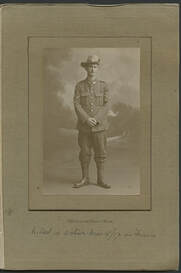
10/1841 Private
John James Hayes
1st Bn. Weliington Regiment, N. Z. E. F.
5th March 1917, aged 37.
Plot II. F. 2.
Click on image to enlarge
Son of Rose Corrigan (formerly Hayes), and the late John Joseph Hayes.
John James Hayes
1st Bn. Weliington Regiment, N. Z. E. F.
5th March 1917, aged 37.
Plot II. F. 2.
Click on image to enlarge
Son of Rose Corrigan (formerly Hayes), and the late John Joseph Hayes.
Eric was born on 24 September 1894, son of William & Jessie Lipscomb of Normanhurst, NSW. He was a Farmer & Soldier having enlisted at Gunnedah, 13th July 1916 and trained at Armidale and Maitland before later embarking from Sydney on 17 October 1916 on the 'Borda', calling in at Melbourne, Durban, Cape Town, and Freetown, Sierra Leone. He disembarked 9th January 1917 at Plymouth and moved to Durrington Camp, Lark Hill, Salisbury, Wiltshire.
He joined 34th Battalion, 3rd Division, AIF.; on 30th April 1917 and moved to the Armentieres sector of the front before he was killed in action only ten days after going into the line, he was 22. Eric's brother, Neville was killed five weeks later near Bullecourt.
Photograph and information courtesy of Adrian Lipscomb, nephew of this soldier
He joined 34th Battalion, 3rd Division, AIF.; on 30th April 1917 and moved to the Armentieres sector of the front before he was killed in action only ten days after going into the line, he was 22. Eric's brother, Neville was killed five weeks later near Bullecourt.
Photograph and information courtesy of Adrian Lipscomb, nephew of this soldier

Brigadier-General George Francis Milne at Le Touquet, near Frelinghien. "The two wagons blocked the road and you entered the communication trench showing just this side of them and went up to the front line. Our mine was started in the houses just off the photo to the right." October 1914. © The rights holder (IWM Q 56734)
Images in this gallery © Geerhard Joos

Officers in the trenches. Left to right: Major J. D. Ingles, 2nd Battalion, Devonshires. Captain O. W. McSheehy, Royal Army Medical Corps, attached 2nd Battalion Scottish Rifles. Sutton, Medical Officer of the 2nd Battalion, Devonshires, and 2nd Lieutenant J. B. Bolitho, 2nd Battalion, Devonshires. 23rd Brigade, 8th Division. At Le Touquet, 26th March 1915. © IWM (Q 51604)

1218 Sergeant
Douglas Laurie Page
34th Bn. Australian Infantry, A. I. F.
17th May 1917, aged 21.
Plot II. G. 12.
Brothers 1218 Corporal (Cpl) Douglas Laurie Page (left) and Lance-Sergeant (LSgt) 1210 Sgt Gregory Valentine Page (right), 34th Battalion, of Dungog, NSW. The brothers had enlisted together on 18 January 1916 and left Australia for England in May 1916 as Non Comissioned Officers, despite neither of them having any previous military experience. After arriving in France for service on the Western Front in November 1916, both men had officially been promoted to Sergeant (Sgt) by March 1917. Sgt Gregory Page was killed at Armentieres on March 1917, aged 19, and is buried at Cité Bonjean Military Cemetery. Sgt Douglas Page was killed two months later by a German shell whilst in the line near Messines on 19 May 1917, aged 21.
Douglas Laurie Page
34th Bn. Australian Infantry, A. I. F.
17th May 1917, aged 21.
Plot II. G. 12.
Brothers 1218 Corporal (Cpl) Douglas Laurie Page (left) and Lance-Sergeant (LSgt) 1210 Sgt Gregory Valentine Page (right), 34th Battalion, of Dungog, NSW. The brothers had enlisted together on 18 January 1916 and left Australia for England in May 1916 as Non Comissioned Officers, despite neither of them having any previous military experience. After arriving in France for service on the Western Front in November 1916, both men had officially been promoted to Sergeant (Sgt) by March 1917. Sgt Gregory Page was killed at Armentieres on March 1917, aged 19, and is buried at Cité Bonjean Military Cemetery. Sgt Douglas Page was killed two months later by a German shell whilst in the line near Messines on 19 May 1917, aged 21.
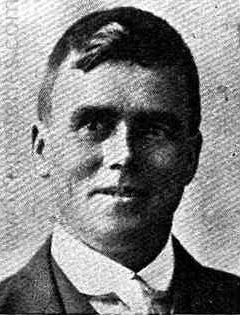
6/3485 Private
George Stuart
1st Bn. Canterbury Regiment, N. Z. E. F.
24th September 1916, aged 25.
Plot I. J. 24.
Son of R. J. Stuart, of Otago, New Zealand.
George Stuart
1st Bn. Canterbury Regiment, N. Z. E. F.
24th September 1916, aged 25.
Plot I. J. 24.
Son of R. J. Stuart, of Otago, New Zealand.
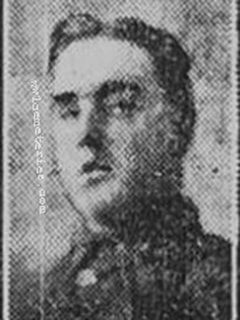
2380 Private
William H. Tudor
23rd Bn. Middlesex Regiment
7th July 1916.
Plot I. H. 20.
William H. Tudor
23rd Bn. Middlesex Regiment
7th July 1916.
Plot I. H. 20.
He was my Mothers Uncle Charlie and when he went to war (called up) he gave my Nan a sixpence and told her to share it with the children, as he said he wasn't coming back. He was as blind as a bat and couldn't see the end of his rifle, he asked if he could serve in the Pay Corps due to his bad eyesight but was thought to be "dodging the column" but as my Nan said to my Mother "the Government killed him by sticking a rifle in his hands".
He was killed when a trench mortar shell landed in his trench killing him and two other soldiers and they are all buried side by side in Tancrez Farm. Prior to the war he worked in a pawnbrokers shop. He enlisted in Ashton-under-Lyne and lived in Miles Platting, Manchester. He is commemorated in the Book of Remembrance in Carlisle Cathedral.
Picture courtesy of Ralph Davidson of Milnrow, Rochdale.
He was killed when a trench mortar shell landed in his trench killing him and two other soldiers and they are all buried side by side in Tancrez Farm. Prior to the war he worked in a pawnbrokers shop. He enlisted in Ashton-under-Lyne and lived in Miles Platting, Manchester. He is commemorated in the Book of Remembrance in Carlisle Cathedral.
Picture courtesy of Ralph Davidson of Milnrow, Rochdale.
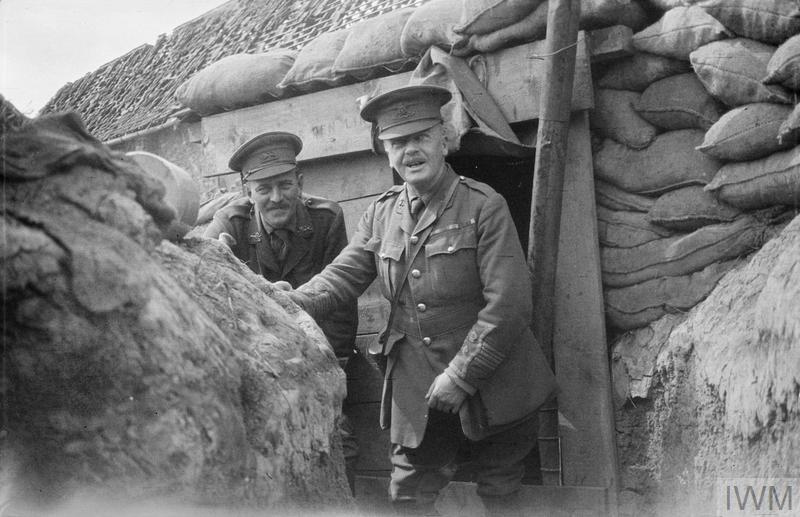
Lieutenant-Colonel C M Ross-Johnson commanding 14th Brigade, Royal Field Artillery in the front lint trenches with Major Jackson, King's Own Royal Lancaster Regiment near Le Touquet (Frelinghien) November 1914. The trenches in this neighbourhood were very close together. © The rights holder (IWM Q 56726)
Images in this gallery © Werner Van Caneghem

Ploegsteert Wood, Belgium. 26 December 1917. Men of the 22nd Battalion, laying down wire entanglements, behind the line at Ploegsteert Wood. Hill 63 is seen in the background. The men were living in hutments at Kortepyp Camp where Christmas Day was spent. The Battalion was in reserve and fatigue parties were sent forward daily by the light railway to Ploegsteert where wiring was carried out and extensive salvaging operations undertaken under the supervision of Major J. S. Dooley MC. The area was very quiet at this time and received only desultory shelling.

